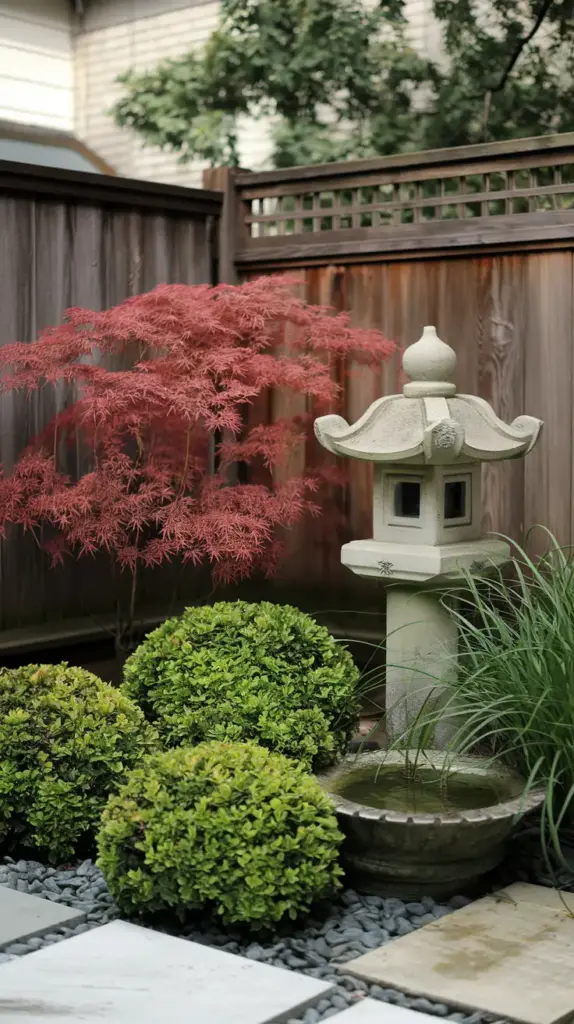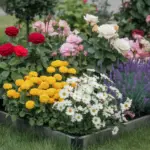5. Japanese-Inspired Pocket Garden

Let me tell you about my journey creating a Japanese-inspired garden in a space no bigger than a parking spot! After years of teaching gardening workshops, I’ve found that this style resonates deeply with folks who want a peaceful retreat in a compact space.
Choosing the Right Plants for Minimalist Beauty
The secret to a successful Japanese pocket garden starts with plant selection. I learned this the hard way when I initially overcrowded my space with too many varieties. Now I stick to the “rule of three” – focusing on just three main plant types for maximum impact. My go-to combination includes dwarf Japanese maples, cloud-pruned boxwood, and ornamental grasses like Hakone grass.
The key is to choose plants that look good year-round, not just during flowering season. I’ve found that focusing on different shades of green and interesting textures creates that serene atmosphere that Japanese gardens are famous for.
Creating Your Zen Water Feature
You wouldn’t believe the difference a tiny water feature can make! I installed a small tsukubai (traditional stone basin) in my garden, and it completely transformed the space. The gentle sound of trickling water makes my morning coffee feel like a meditation session.
Pro tip: You don’t need anything elaborate. A simple ceramic bowl with a small solar-powered pump can work wonders. Just make sure to position it where it catches some sunlight during the day.
The Art of Ornamental Grasses
Ornamental grasses are absolute champions in a Japanese-style garden. They provide movement, sound, and that essential connection to nature. I’ve had great success with:
- Japanese Forest Grass (Hakonechloa macra)
- Little Bluestem for vertical interest
- Japanese Blood Grass for color contrast
The way these grasses dance in the breeze adds such a magical element to the space.
Mastering Focal Points and Balance
Creating focal points in a small space requires some clever thinking. I use a combination of:
- A statement stone lantern
- Strategic moss patches
- Carefully placed river rocks
The trick is to follow the principle of asymmetrical balance – something I definitely didn’t get right at first! Remember, in Japanese garden design, empty space (called ma) is just as important as the elements you add.
Maintaining Harmony Through the Seasons
The beauty of a Japanese garden lies in its year-round appeal. I’ve learned to embrace the changing seasons by incorporating:
- Spring: Emerging grass shoots and maple leaves
- Summer: Cool green textures and shade patterns
- Fall: Dramatic maple colors
- Winter: Structural elements and frost-covered grasses
Working with nature rather than against it makes maintenance so much more enjoyable.
Ready to explore another exciting small garden transformation? Click the next button below to discover how to create a stunning raised bed flower garden that maximizes every inch of space. I’ll share some game-changing tips about soil preparation and companion planting that took me years to perfect!









GIPHY App Key not set. Please check settings